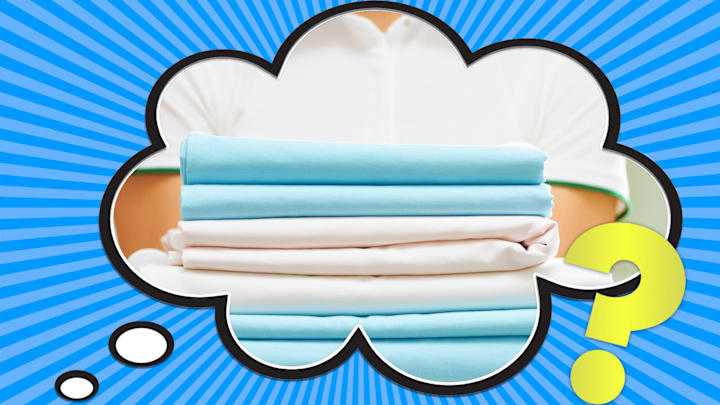Enter your local Bed Bath & Beyond or scroll through your favorite e-commerce website looking for the best bedding and you’ll be deluged with sales copy that touts thread counts: 300, 800, 1000. Some consumers infer that a lower thread count means sentencing yourself to a string of restless nights by sleeping on what feels like a burlap sack, while a 1000-count bed sheet set belongs in Windsor Castle. But what’s really going on with thread counts? Is it materially relevant, or just material marketing?
According to HowStuffWorks, thread counts are indeed actual measurements of how many threads in a fabric are woven together in 1 square inch. The number is taken from the amount of threads that are sewn in vertically and horizontally, but they’re not multiplied. If you had 200 vertical and 200 horizontal, your thread count would be 400.
Because it gets pretty difficult to weave hundreds upon hundreds of threads into a single square inch, a claim of 800 or 1000 seems suspicious. And in a way, it is. Manufacturers who boast of high thread counts may be counting each individual fiber, or plies, in a thread. That can multiply the thread count significantly without actually increasing comfort.
“Now you see 1000 thread count sheets but you just can’t get that many threads on a loom,” Pat Slaven, a textile expert at Consumer Reports, said in 2013.
So what does all this really mean for your comfort? It’s true that sheets with a low thread count like 150 or under may feel a little coarse or itchy, whereas those with a thread count of up to 400 are generally soft enough for most people, according to Slaven. A thread count of up to 500 is roughly the maximum that can be woven in a square inch. Beyond that and you may be experiencing some marketing manipulation: Manufacturers know consumers associate a high thread count with comfort, so they might massage the numbers. In the end, that 1000-thread-count sheet set may not be any different from one with a 400 thread count. It may actually feel a little rougher, as those multi-ply threads can lose softness.
There’s a lot more that goes into sheet comfort, including the quality of fabric being used. Egyptian cotton is typically longer and stronger; singeing is a process that removes the kind of fabric that can create fuzzy patches later on. In the end, you want a single-ply sheet using quality material, like Egyptian, combed, or Pima cotton. How the fabric is woven matters, too. Sateen and percale weaves tend to be softer to the touch.
But if you're shopping in a store, don’t rely solely on the touch test. Even if you unzip a sheet bag and feel the fabric, you may not be getting a strong indication of what the sheets will feel like once they’re washed. Manufacturers use silicone softeners and other materials to impress consumers at the point of purchase, but that will wash out once you bring them home. To find the best sheet set for you, you're probably going to have to sleep on it.
Have you got a Big Question you'd like us to answer? If so, let us know by emailing bigquestions@mentalfloss.com.
